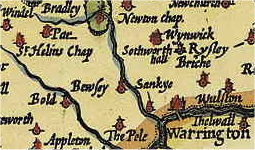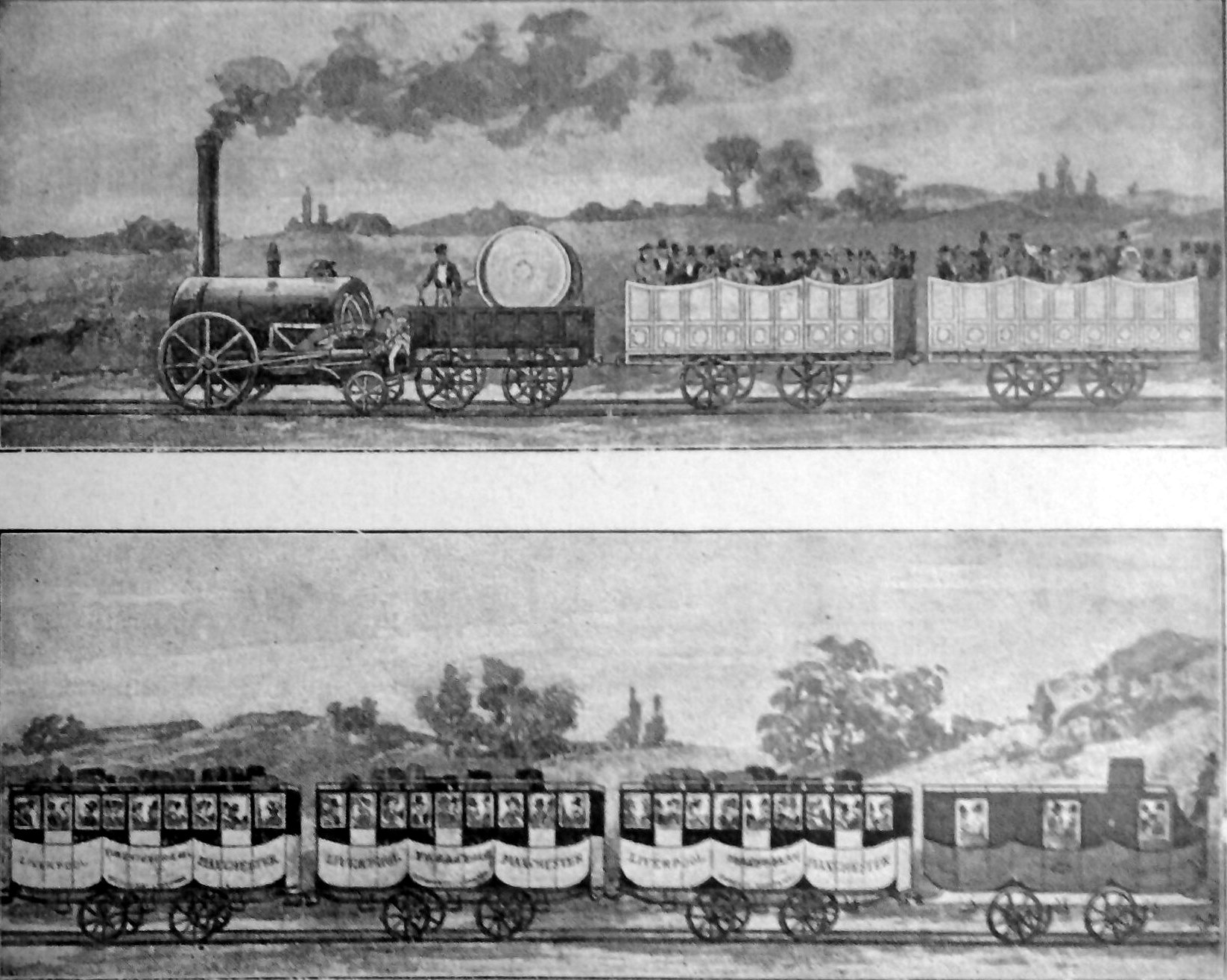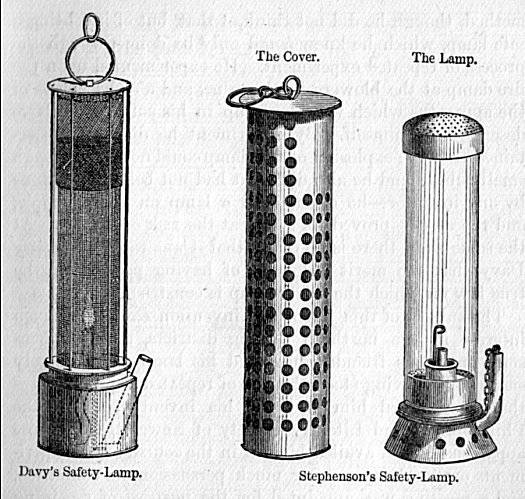|
Rainhill
Rainhill is a village and civil parish in the Metropolitan Borough of St Helens, Merseyside, England. The population at the 2011 census was 10,853. Historically part of Lancashire, Rainhill was a township in the ecclesiastical parish of Prescot and hundred of West Derby. Following the Local Government Act 1894, it became part of the Whiston Rural District. The Rainhill Trials of 1829 resulted in the selection of Stephenson's ''Rocket'' as the world's first modern steam locomotive. History Early history Rainhill has been recorded since Norman times but its name is believed to come from the Old English personal name of Regna or Regan. It is thought that around the time of the Domesday Book Rainhill was a part of one of the townships within the "Widnes fee". Recordings have shown that in the year 1246, Roger of Rainhill died and the township was divided into two halves for each of his daughters. One half was centred on the now-standing Rainhill Manor public house, see Rainhil ... [...More Info...] [...Related Items...] OR: [Wikipedia] [Google] [Baidu] |
Rainhill Hall
Rainhill Hall or Loyola Hall is a Grade II listed country house built in the 19th century in Rainhill, Merseyside, England, by Bartholomew Bretherton. It is situated on the Warrington Road, next to St Bartholomew's Church. From 1923 to 2014, it was a retreat house run by the Society of Jesus. From 2017, it has been a hotel and wedding venue owned by Signature Living. History Site Bartholomew Bretherton started a business in coaches in 1800 in Liverpool. On journeys to Manchester or London, Rainhill was the first stop where horses were changed. In 1807 he came to live in the village. In 1824 he built Rainhill House. In 1869, Mary Stapleton-Bretherton, his daughter, enlarged the house to over twice its original size, renaming it Rainhill Hall.Dyckhoff SJ, Christopher (1994). ''A Quiet Place: A History of Loyola Hall'' St. Helens, pp. 5-35. When Mary died in 1883, the Stapleton-Bretherton family owned all the land that made up the parish of Rainhill. As Mary was childless, sh ... [...More Info...] [...Related Items...] OR: [Wikipedia] [Google] [Baidu] |
St Helens, Merseyside
St Helens () is a town in Merseyside, England, with a population of 117,308. It is the administrative centre of the Metropolitan Borough of St Helens which had a population of 183,200 at the United Kingdom Census 2021, 2021 Census. The town is north of the River Mersey, in the south-west part of Historic counties of England, historic Lancashire. The town was initially a small settlement within the historic county's ancient hundred (county division), ''hundred'' of West Derby (hundred), West Derby in the Township (England), township of Windle, St Helens, Windle but by the mid-1700s the town had developed into a larger urban area beyond the townships borders. By 1838 the council was formally made responsible for the administration of Windle and the three other townships of Eccleston, St Helens, Eccleston, Parr, St Helens, Parr and Sutton, St Helens, Sutton that were to form the town's traditional shape. In 1868 the town was incorporated as a municipal borough, then later became ... [...More Info...] [...Related Items...] OR: [Wikipedia] [Google] [Baidu] |
Stephenson's Rocket
Stephenson's ''Rocket'' is an early steam locomotive of 0-2-2 wheel arrangement. It was built for and won the Rainhill Trials of the Liverpool and Manchester Railway (L&MR), held in October 1829 to show that improved locomotives would be more efficient than stationary steam engines. ''Rocket'' was designed and built by Robert Stephenson in 1829, and built at the Forth Street Works of his company in Newcastle upon Tyne. Though ''Rocket'' was not the first steam locomotive, it was the first to bring together several innovations that produced the most advanced locomotive of its day. It is the most famous example of an evolving design of locomotives by Stephenson, and became the template for most steam engines in the following 150 years. The locomotive was displayed in the Science Museum in London until 2018, after which it was briefly exhibited at sites around the UK, ultimately at National Railway Museum in York. Since 2023, it has been based at the Locomotion Museum in ... [...More Info...] [...Related Items...] OR: [Wikipedia] [Google] [Baidu] |
Frederick Bailey Deeming
Frederick Bailey Deeming (30 July 1853 – 23 May 1892) was an English-born Australian serial killer who was convicted and executed for the murder of his entire family in Rainhill and his second wife in Melbourne. He is remembered today because he was suspected by some of being the notorious serial killer Jack the Ripper. Life Early life and first murders Frederick Bailey Deeming was born in Ashby-de-la-Zouch, Leicestershire, England, the son of brazier Thomas Deeming and his wife Ann (née Bailey). According to writers Maurice Gurvich and Christopher Wray, Deeming was a "difficult child." At age 16 he ran away to sea, and thereafter he began a long career of crime, largely theft, thieving and obtaining money under false pretenses. Deeming was also responsible for the murder of his first wife Marie and their four children at Rainhill, England, on or about 26 July 1891; and a second wife, Emily Mather, at Windsor, Victoria, Windsor, Melbourne, on 24 December 1891. Less than thr ... [...More Info...] [...Related Items...] OR: [Wikipedia] [Google] [Baidu] |
Liverpool And Manchester Railway
The Liverpool and Manchester Railway (L&MR) was the first inter-city railway in the world. It Opening of the Liverpool and Manchester Railway, opened on 15 September 1830 between the Lancashire towns of Liverpool and Manchester in England. It was also the first railway to rely exclusively on locomotives driven by Steam engine, steam power, with no Horsecar, horse-drawn traffic permitted at any time; the first to be entirely double track throughout its length; the first to have a true Railway signalling, signalling system; the first to be fully Public transport timetable, timetabled; and the first to carry mail. Trains were hauled by company steam locomotives between the two towns, though private wagons and carriages were allowed. Cable railway, Cable haulage of freight trains was down the steeply-graded Wapping Tunnel to Liverpool Docks from Edge Hill junction. The railway was primarily built to provide faster transport of raw materials, finished goods, and passengers between ... [...More Info...] [...Related Items...] OR: [Wikipedia] [Google] [Baidu] |
George Stephenson
George Stephenson (9 June 1781 – 12 August 1848) was an English civil engineer and Mechanical engineering, mechanical engineer during the Industrial Revolution. Renowned as the "Father of Railways", Stephenson was considered by the Victorian era, Victorians as a great example of diligent application and thirst for improvement. His chosen Track gauge#The Stockton and Darlington Railway, rail gauge, sometimes called "Stephenson gauge", was the basis for the standard gauge used by most of the world's railways. Pioneered by Stephenson, rail transport was one of the most important technological inventions of the 19th century and a key component of the Industrial Revolution. Built by George and his son Robert Stephenson, Robert's company Robert Stephenson and Company, the Locomotion No. 1, ''Locomotion'' No. 1 was the first steam locomotive to carry passengers on a public rail line, the Stockton and Darlington Railway in 1825. George also built the first public inter-city railway ... [...More Info...] [...Related Items...] OR: [Wikipedia] [Google] [Baidu] |
St Helens South And Whiston (UK Parliament Constituency)
St. Helens South and Whiston is a constituency created in 2010 represented in the House of Commons of the UK Parliament since 2015 by Marie Rimmer of the Labour Party. History ;Creation Following the Fifth Periodic Review of Westminster constituencies the Boundary Commission for England expanded and renamed the St Helens South seat, covering the south of the Metropolitan Borough of St Helens and three wards of the Knowsley borough which were in the neighbouring seat of Knowsley South (abolished). Further to the completion of the 2023 Periodic Review of Westminster constituencies, the seat was subject to minor boundary changes, with parts of Whiston and Cronton ward being included in the new constituency of Widnes and Halewood, first contested at the 2024 United Kingdom general election. ;Results of the winning party The predecessor seat of St Helens South was held by the Labour Party since the 1935 election. This seat's first MP was Shaun Woodward who had been MP for S ... [...More Info...] [...Related Items...] OR: [Wikipedia] [Google] [Baidu] |
Metropolitan Borough Of St Helens
The Metropolitan Borough of St Helens is a local government district with borough status in Merseyside, North West England. The borough is named after its largest settlement, St Helens. It is one of the six boroughs of the Liverpool City Region. Other towns and villages in St Helens include Earlestown, Rainhill, Eccleston, Clock Face, Haydock, Billinge, Garswood, Rainford and Newton-le-Willows. History The Metropolitan Borough was formed on 1 April 1974 as a merger of the former County Borough of St Helens, along with the urban districts of Haydock, Newton-le-Willows and Rainford, and parts of Billinge-and-Winstanley and Ashton-in-Makerfield urban districts, along with part of Whiston Rural District, all from the administrative county of Lancashire. Between 1974 and 1986 (when it was abolished), the borough council shared functions with Merseyside County Council. After abolition, the functions of this body were in part devolved to the boroughs and in part transfer ... [...More Info...] [...Related Items...] OR: [Wikipedia] [Google] [Baidu] |
Steam Locomotive
A steam locomotive is a locomotive that provides the force to move itself and other vehicles by means of the expansion of steam. It is fuelled by burning combustible material (usually coal, Fuel oil, oil or, rarely, Wood fuel, wood) to heat water in the locomotive's Boiler (power generation), boiler to the point where it becomes gaseous and its volume increases 1,700 times. Functionally, it is a steam engine on wheels. In most locomotives, the steam is admitted alternately to each end of its Steam locomotive components, cylinders in which pistons are mechanically connected to the locomotive's main wheels. Fuel and water supplies are usually carried with the locomotive, either on the locomotive itself or in a Tender (rail), tender coupled to it. #Variations, Variations in this general design include electrically powered boilers, turbines in place of pistons, and using steam generated externally. Steam locomotives were first developed in the United Kingdom of Great Britain an ... [...More Info...] [...Related Items...] OR: [Wikipedia] [Google] [Baidu] |
West Derby Hundred
The West Derby Hundred (also known as West Derbyshire) is one of the six subdivisions of the historic county of Lancashire, in northern England. Its name alludes to its judicial centre being the township of West Derby (the suffix ''-shire'' meaning the territory was appropriated to the prefixed settlement). It covered the southwest of Lancashire, containing the ancient ecclesiastical parishes of Walton, Sefton, Childwall, Huyton, Halsall, Altcar, North Meols, Ormskirk, Aughton, Warrington, Prescot, Wigan, Leigh, Liverpool, and Winwick. It corresponds roughly to areas of Merseyside north of the River Mersey and also covered parts of modern West Lancashire Borough, Wigan borough, Warrington Borough and Halton Borough. History Domesday Book When the ''Domesday Book'' was compiled, this hundred was composed of three separate hundreds of West Derby, [...More Info...] [...Related Items...] OR: [Wikipedia] [Google] [Baidu] |
Cronton
Cronton is a village and civil parish within the Metropolitan Borough of Knowsley, Merseyside, in England. The village is surrounded by green belt land. Over the county border in Cheshire, Widnes town centre is to the south-southeast. History Historically a part of Lancashire, Cronton is an ancient village and was once a centre for the makers of watch parts and movements. There is an ancient cross, now no more than a column of stone on ruined steps. This was one of many stopping places on the way to the parish church at Farnworth. The five-holed stocks next to the war memorial in Coronation Gardens are almost unique to Cronton with few other specimens found anywhere. Many of the 19th Century residents of Cronton were farmers. There was a blacksmith in Cronton Lane (opposite what is now the Black Horse pub). Family names common in Cronton during the 19th Century census returns: Leather, Haughton, Pitt, Coughlin, Critchley, Dwerryhouse, Atherton, Hillyer, Glover and Lister. The C ... [...More Info...] [...Related Items...] OR: [Wikipedia] [Google] [Baidu] |
Lancashire
Lancashire ( , ; abbreviated ''Lancs'') is a ceremonial county in North West England. It is bordered by Cumbria to the north, North Yorkshire and West Yorkshire to the east, Greater Manchester and Merseyside to the south, and the Irish Sea to the west. The largest settlement is Preston, Lancashire, Preston, and the county town is the city of Lancaster, Lancashire, Lancaster. The county has an area of and a population of 1,490,300. Preston is located near the centre of the county, which is urbanised and includes the towns of Blackburn and Burnley; the seaside resort of Blackpool lies to the west, and Lancaster, Lancashire, Lancaster is in the north. For Local government in England, local government purposes the county comprises a non-metropolitan county, with twelve districts, and two Unitary authorities of England, unitary authority areas: Blackburn with Darwen and Borough of Blackpool, Blackpool. Lancashire County Council and the two unitary councils collaborate through the ... [...More Info...] [...Related Items...] OR: [Wikipedia] [Google] [Baidu] |




